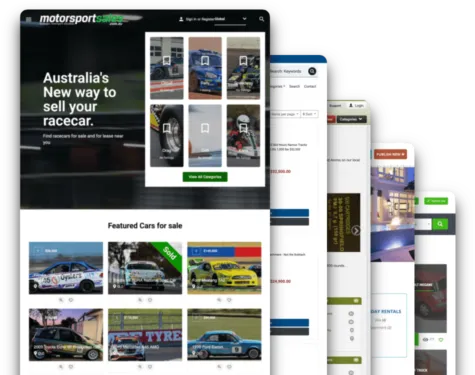Creating an online classified marketplace can be a lucrative venture. However, jumping into development without testing your idea can lead to costly mistakes!

Validation is one of the keys to ensuring that your concept meets market demand and solves real-world problems.
Today we will guide you through effective and affordable strategies to validate your online classified marketplace idea.
Why Validation Matters
Before investing resources in development, understanding your target audience and market fit is critical.
Benefits of Validation
- Risk Reduction: Identify potential pitfalls early.
- Resource Optimization: Avoid wasting money and time on ideas that don't resonate.
- Investor Appeal: A validated idea increases your chances of securing funding.
Statistics
- According to CB Insights, 35% of startups fail because there's no market need for their product.
- Proper validation increases the likelihood of success by over 30%.

Step 1: Conduct Market Research
Market research is the foundation of idea validation.
Key Actions
Define Your Niche:
- Identify the specific audience or category your marketplace will serve.
- Examples: Jobs (Indeed), items for sale (Craigslist), or rentals (Zillow).
Analyze Competitors:
- Evaluate their strengths, weaknesses, and market positioning.
- Tools: SEMrush, SimilarWeb, and Google Trends.
Gather User Insights:
- Use surveys and polls to understand your audience’s needs.
- Example: Ask questions like, "What challenges do you face finding service providers locally?"
Step 2: Create a Minimum Viable Product (MVP)
An MVP allows you to test your idea with minimal investment.
Features to Include
- Simple user interface.
- Core functionality (e.g., listing and search features).
- Basic communication tools.
Tools for MVP Development
- No-code platforms like Bubble, Glide, or WordPress.
- Yclas for marketplace-specific needs.
Real-Life Example: Airbnb’s early MVP was a simple website that allowed users to list and book rooms. The platform’s success proved the demand before scaling.

Step 3: Validate with Early Adopters
Engage a small group of users to test your marketplace idea.
Strategies
- Offer Incentives: Provide discounts or free trials to attract users.
- Create a Feedback Loop: Collect insights to refine your product.
- Leverage Social Media: Use platforms like Facebook and LinkedIn to find your initial audience.
Success Story: Uber launched in San Francisco with a limited beta. This allowed the team to fine-tune the app based on real-world feedback.
Step 4: Test Your Monetization Model
A marketplace idea is only viable if it generates revenue.
Common Monetization Strategies
- Listing Fees: Charge users to post items or services.
- Commission-Based: Take a percentage from every transaction.
- Subscription Plans: Offer premium features for a monthly fee.
Validation Tactics
- Conduct A/B testing on pricing models.
- Analyze competitors’ revenue structures.
Data Insight: According to Statista, subscription-based marketplaces have seen a 25% higher retention rate than ad-based models.
Challenges and Solutions
Challenge 1: Finding Early Users
Solution: Partner with influencers or local businesses to promote your platform.
Challenge 2: Building Trust
Solution: Implement reviews, ratings, and verification processes.
Challenge 3: Standing Out in a Crowded Market
Solution: Focus on niche markets and unique value propositions.
Predicting Innovations and Evolving Strategies
The classified marketplace landscape is rapidly evolving.
Future Trends
- AI-Powered Search: Enhancing user experiences with personalized recommendations.
- Blockchain for Transactions: Ensuring secure and transparent payments.
- Hyperlocal Focus: Targeting smaller geographical areas for community-driven platforms.
Example: Nextdoor focuses on neighborhood-based interactions, highlighting the value of hyperlocal strategies.
Case Studies of Marketplace Successes
Case Study 1: Craigslist
Validation Tactic: Started as an email list for friends.
Lesson: Begin small and scale based on demand.
Case Study 2: Fiverr
Validation Tactic: Launched with a clear niche (freelance gigs for $5).
Lesson: A focused concept attracts early users more effectively.
Case Study 3: Facebook Marketplace
Validation Tactic: Integrated marketplace features into an existing platform.
Lesson: Leverage existing user bases for validation.
Call-to-Action
Validating your online classified marketplace idea is the first step toward success.
By understanding your audience, testing your concept, and refining based on feedback, you can build a platform that resonates.
Looking to create a marketplace? Contact us at Yclas for support.

